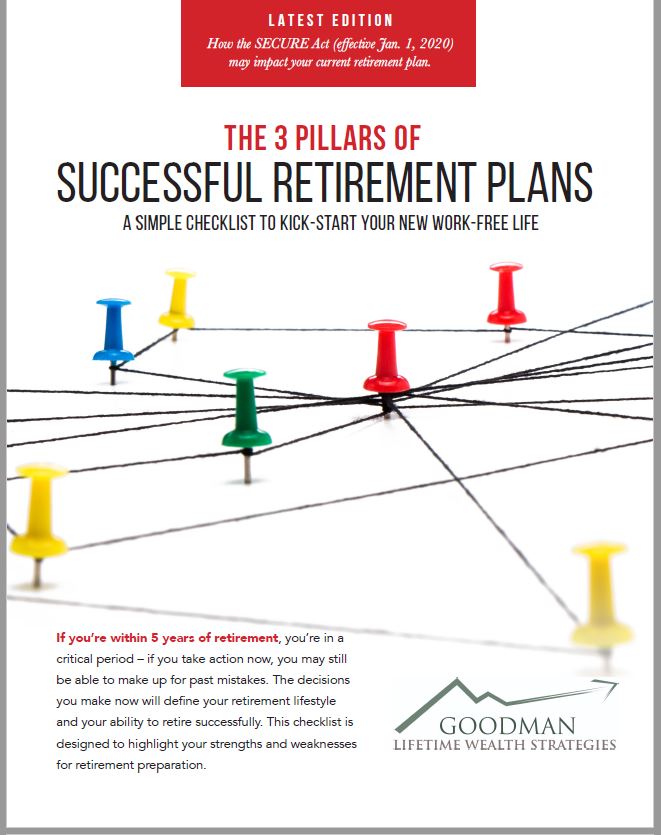Constructing a portfolio this way may help you ride through a bear market in retirement.
Stocks sometimes retreat. That reality can be overlooked in a long bull market. Bear markets do appear, and a deep downturn could force you to sell securities in retirement, so you can pay for necessary expenses.
Right now, you might have too much money in stocks. Years of steady gains may have unbalanced your portfolio and heightened your risk exposure. If you are 60 or older, that constitutes a warning sign, especially given this bull market’s age. What would a downturn do to your retirement fund and your retirement income?
If you are wondering how to respond to this risk, consider the bucket approach to retirement income planning. The bucket approach may help you through different market cycles in retirement. This investing strategy, credited to a Florida financial planner named Harold Evensky, has simple and complex variations. It assigns fixed-income and equity investments to different “buckets” with the goal of providing sufficient cash flow to retirees during different stages of their “second acts.”1,2
The simplest version involves just two buckets. One holds the equivalent of 1-5 years of cash reserves (in deposit accounts and/or fixed-income investments), and the other holds everything else in the investment portfolio. When you need to fund your expenses, you turn to the cash and the fixed-income vehicles and leave equities untouched. Rebalancing your portfolio (that is, selling investments in an overweighted asset class) lets you increase the size of your cash bucket.1,2
Other versions of the bucket approach have longer time horizons. In one variation designed to be used for at least 25 years, a cash reserve bucket is created to fund the first two years of retirement, its size approximating 10% of the portfolio; the cash comes from FDIC-insured sources or Treasuries. A second bucket, intended to generate somewhat greater income, is planned for the rest of the first decade of retirement; this bucket is filled with longer-duration, fixed-income investments and comprises about 35% of the portfolio. The third bucket (the other 55%) is designed for the years afterward and contains a sizable equities position; the goal here is to realize some growth and compounding for a decade, then tap into that bucket for income.1,2
In glimpsing the details of the bucket approach, you can also see the big picture. Suppose a bear market occurs just as you retire. Since your retirement income strategy pulls cash from deposit accounts and fixed-income investments first, your equity positions have time to rebound. You have a chance to avoid selling low (and selling off part of your retirement fund).
Is the bucket approach foolproof? No, but no investing strategy is. In the worst-case scenario, you drain 100% of the cash bucket(s) and end up with an all-equities portfolio. That is hardly what you want in retirement. Bucket allocations must be carefully calculated, and periodic bucket rebalancing is also needed.
The bucket approach may have both financial and psychological merits. Most retirees use the 4% rule (or something close) when withdrawing income: they take distributions from various accounts and asset classes, perhaps with little regard for tax efficiency. If Wall Street stumbles and their portfolios shrink, they may panic and make moves they will later regret – such as selling low, abandoning stocks, or even running toward alternative investments in desperation.
When you use a bucket approach, you first turn to cash and/or liquid securities for retirement income rather than equities. Psychologically, you know that if a bear market arrives early in your retirement, your equity holdings will have some time to recover. This knowledge is reassuring, and it may dissuade you from impulsive financial decisions.
Ask about the bucket approach today. It could be a great financial strategy to adopt for your retirement. —————————————————————————————————————————This material was prepared by MarketingPro, Inc., and does not necessarily represent the views of the presenting party, nor their affiliates. This information has been derived from sources believed to be accurate. Please note – investing involves risk, and past performance is no guarantee of future results. The publisher is not engaged in rendering legal, accounting or other professional services. If assistance is needed, the reader is advised to engage the services of a competent professional. This information should not be construed as investment, tax or legal advice and may not be relied on for the purpose of avoiding any Federal tax penalty. This is neither a solicitation nor recommendation to purchase or sell any investment or insurance product or service, and should not be relied upon as such. All indices are unmanaged and are not illustrative of any particular investment.
Investment Advisory Services are offered through Brookstone Capital Management, LLC (BCM), a Registered Investment Advisor. Insurance and annuity products are provided separately through Adam Goodman
Citations.1 – seattletimes.com/business/about-to-retire-heres-how-to-cope-with-stock-market-shocks/ [11/25/17]2 – news.morningstar.com/articlenet/article.aspx?id=839521 [12/13/17]
Try the Bucket Approach
To help you through these uncertain times, we've put together a special report outlining 5 Ways Events of 2020 May Be Affecting Your Retirement & What You Can Do About It.
By entering your information you grant GLWS permission to send you periodic content
Don't worry. We hate spam too. We do not spam or sell your info.

Monthly Reliable Financial News.
Straight to your inbox.
Get no nonsense reliable financial news in your inbox every month.
Get It TodayFind us on YouTube
Find us on Google
All reviews are from current clients unless otherwise stated
Links to third-party websites are for general information purposes only and do not constitute any offer or solicitation to buy or sell any services or products of any kind. The other parties are responsible for the content on their website(s). You are encouraged to read and evaluate the privacy and security policies on the specific site you are entering. They are not intended and should not be relied upon as investment, insurance, financial, tax, or legal advice.
Footer
Connect With Us
Phone: 702-462-7233
Fax: 866-783-0250
Email: info@ltwealthstrategies.com
Locations
Office
5550 Painted Mirage Rd #500
Las Vegas, NV 89149
Virtual
Serving Select Individuals Nationwide
Additional Resources
Company Links
Investment Advisory Services are offered through Brookstone Capital Management, LLC (BCM), a Registered Investment Advisor. Insurance and annuity products are provided separately through Adam Goodman.
*Guarantees provided by insurance products are backed by the claims paying ability of the issuing carrier.
Any comments regarding safe and secure investments, and guaranteed income streams refer only to fixed insurance products. They do not refer, in any way to securities or investment advisory products. Fixed Insurance and Annuity product guarantees are subject to the claims‐paying ability of the issuing company and are not offered by Brookstone Capital Management. Index or fixed annuities are not designed for short term investments and may be subject to caps, restrictions, fees and surrender charges as described in the annuity contract.
Third party ratings and recognition are no guarantee of future investment success and do not ensure that a client or prospective client will experience a higher level of performance or results. These ratings should not be construed as an endorsement of the advisor by any client nor are they representative of any one client's evaluation.
The content of this website is provided for informational purposes only and is not a solicitation or recommendation of any investment strategy. Investments and/or investment strategies involve risk including the possible loss of principal. There is no assurance that any investment strategy will achieve its objectives.
© 2025 Adam Goodman. All rights reserved.
-
Handcrafted with by Brandwell Studio. Powered by the Genesis Framework.


Leave a Reply